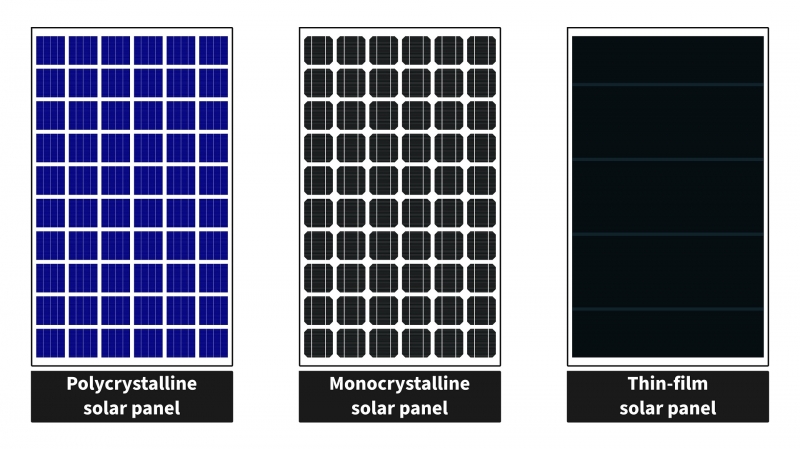2022
What are the main types of residential solar panels

When you decide on a residential solar panel installation in Victoria, you gain the ability to harness the sun’s free energy to generate electricity for your own home. Part of choosing a solar panel system for your home is deciding which type of solar panels to use.
There are a few to choose from and they each come with their own pros and cons. For instance, the amount of energy a solar cell can produce is called solar efficiency. The average is around 15-17%, and high-end panels can reach over 20% efficiency. So some types, like monocrystalline panels, will have a higher solar efficiency than others, but they may cost more to install.
The main types of residential solar panels
- Monocrystalline
- Polycrystalline/Multicrystalline
- Amorphous/Thin-film
Monocrystalline
These great-looking, black coloured panels are the most common and most efficient (typically 17%-22%). They use photovoltaic cells made of a single silicon crystal. Their superior efficiency means they require less space to produce the same amount of energy as other types, making them a great choice for smaller homes. They handle high temperatures well which contributes to their long lasting durability (~25yrs-40yrs). The disadvantage of this type is it is more complicated to produce, thus more expensive than other choices.
Polycrystalline/multicrystalline
You might recognize these panels by their blue hue. Like mono panels, poly panels are made of photovoltaic cells, but each cell consists of multiple silicon crystal fragments. This reduces their solar efficiency somewhat to 15%-17%. These mid-tier panels are a little larger than mono panels, not quite as durable or effective in high temperatures or low lighting conditions, but they are more affordable. And recent technology is making improvements and closing the gap. These are a solid choice for jumping into green energy production.
Amorphous/thin-film
Thin-film solar panels are made from a variety of materials which may include a thin layer of non-crystalline silicon and glass, plastic or metal. They are the least efficient, in the 10%-13% range, however they are the best at handling high temperatures and low light conditions. Their light-weight, more flexible design makes them easier–thus cheaper–to install, and their thin, solid black aesthetic is very pleasing to most people. Thin-film panels have a lifespan of 10 to 20 years.
We hope this information is helpful. Solar power is clean energy and part of the solution to increasing energy costs and dwindling petroleum resources.
If you have any questions about the information in this blog or want to discuss a solar panel installation for your home, please contact NetZero Solar at 250-516-5932.
